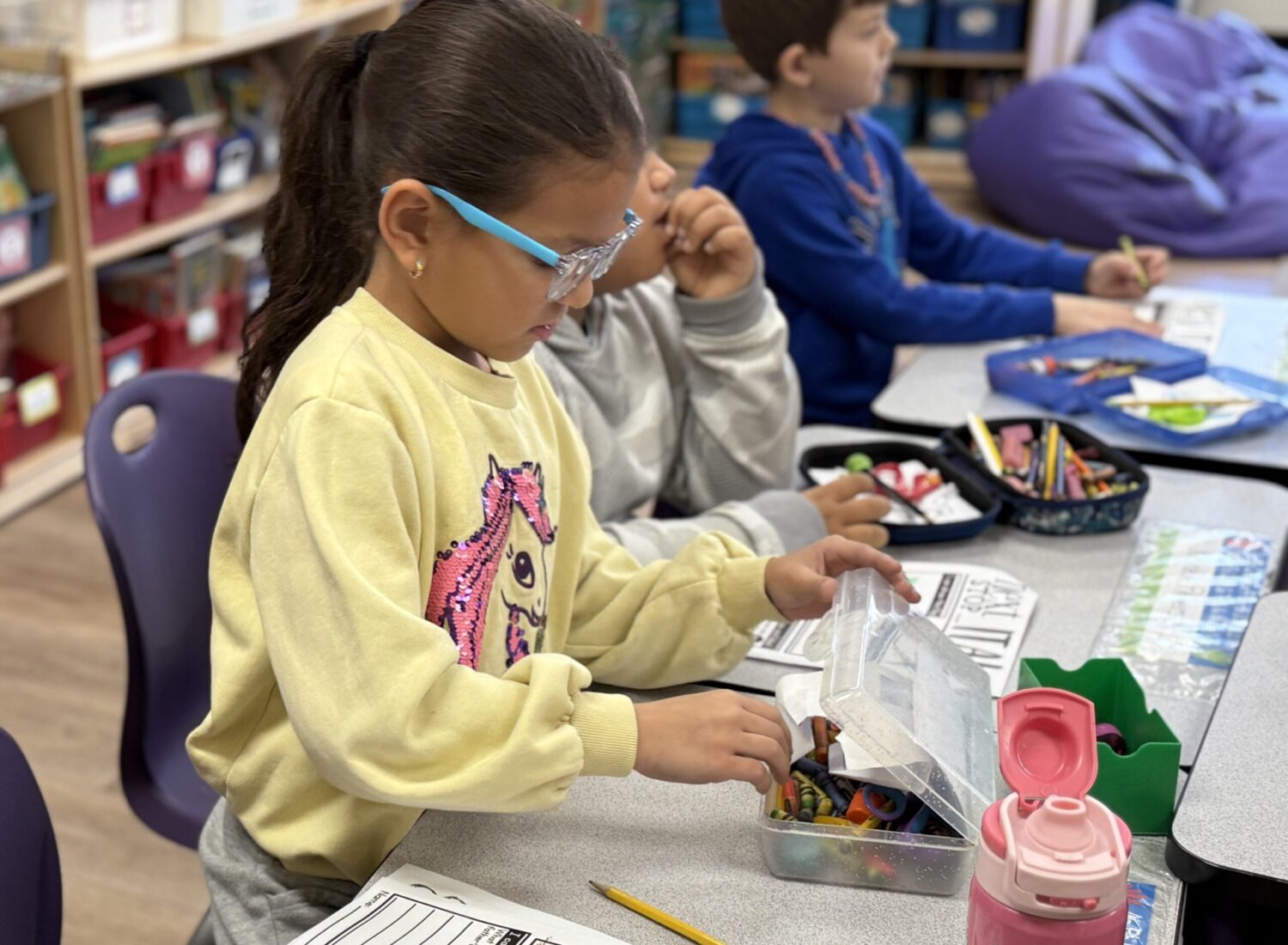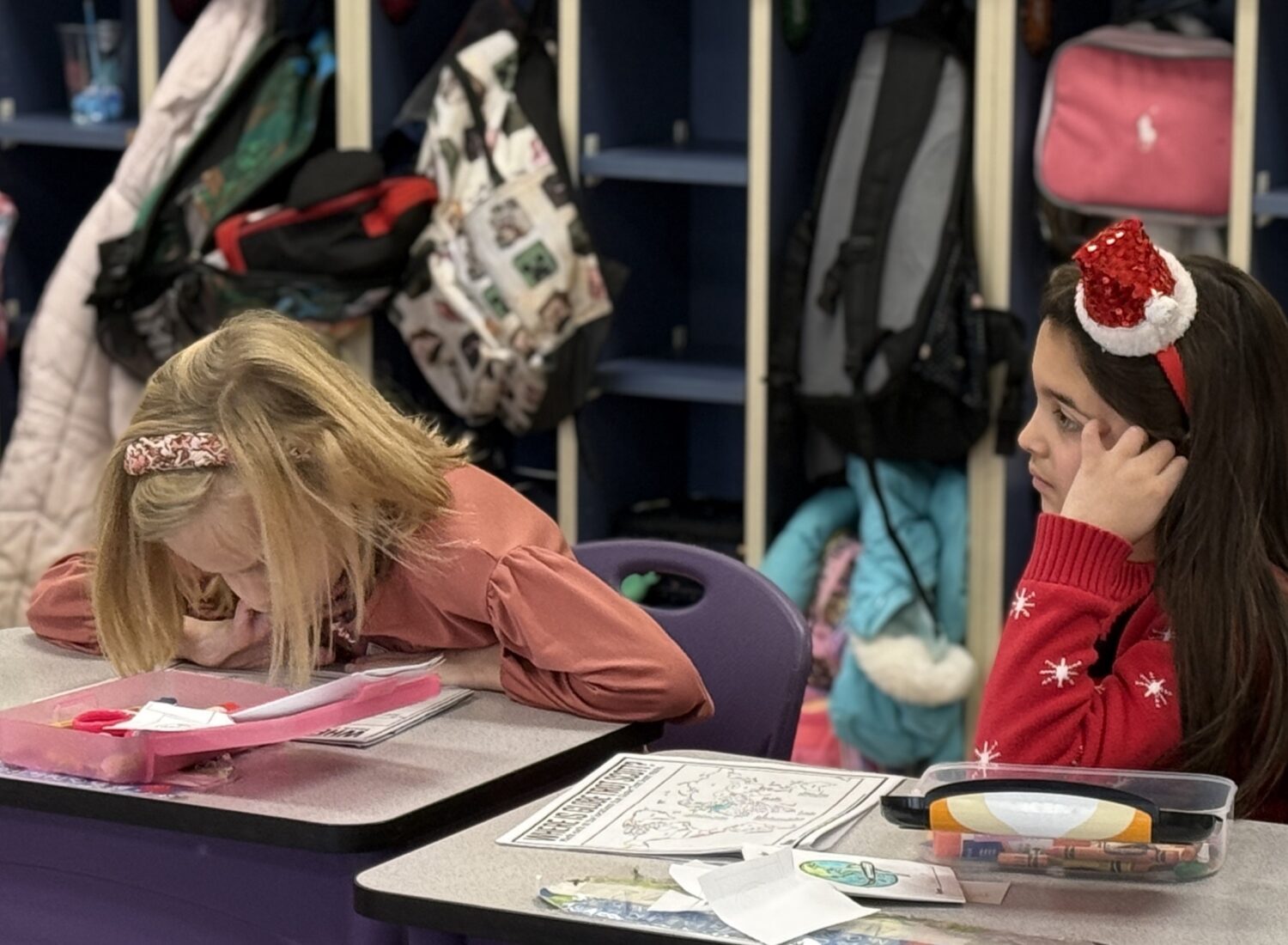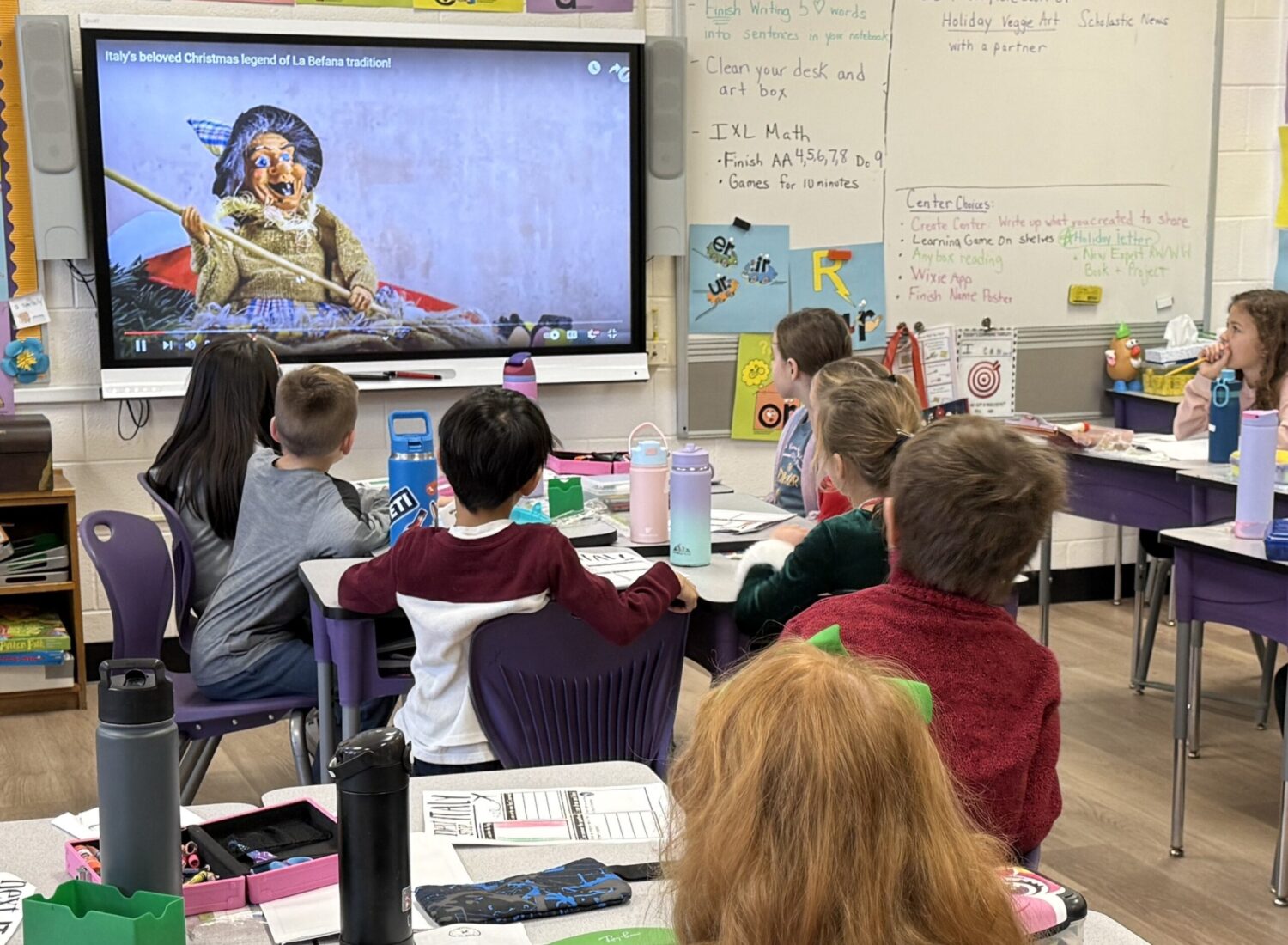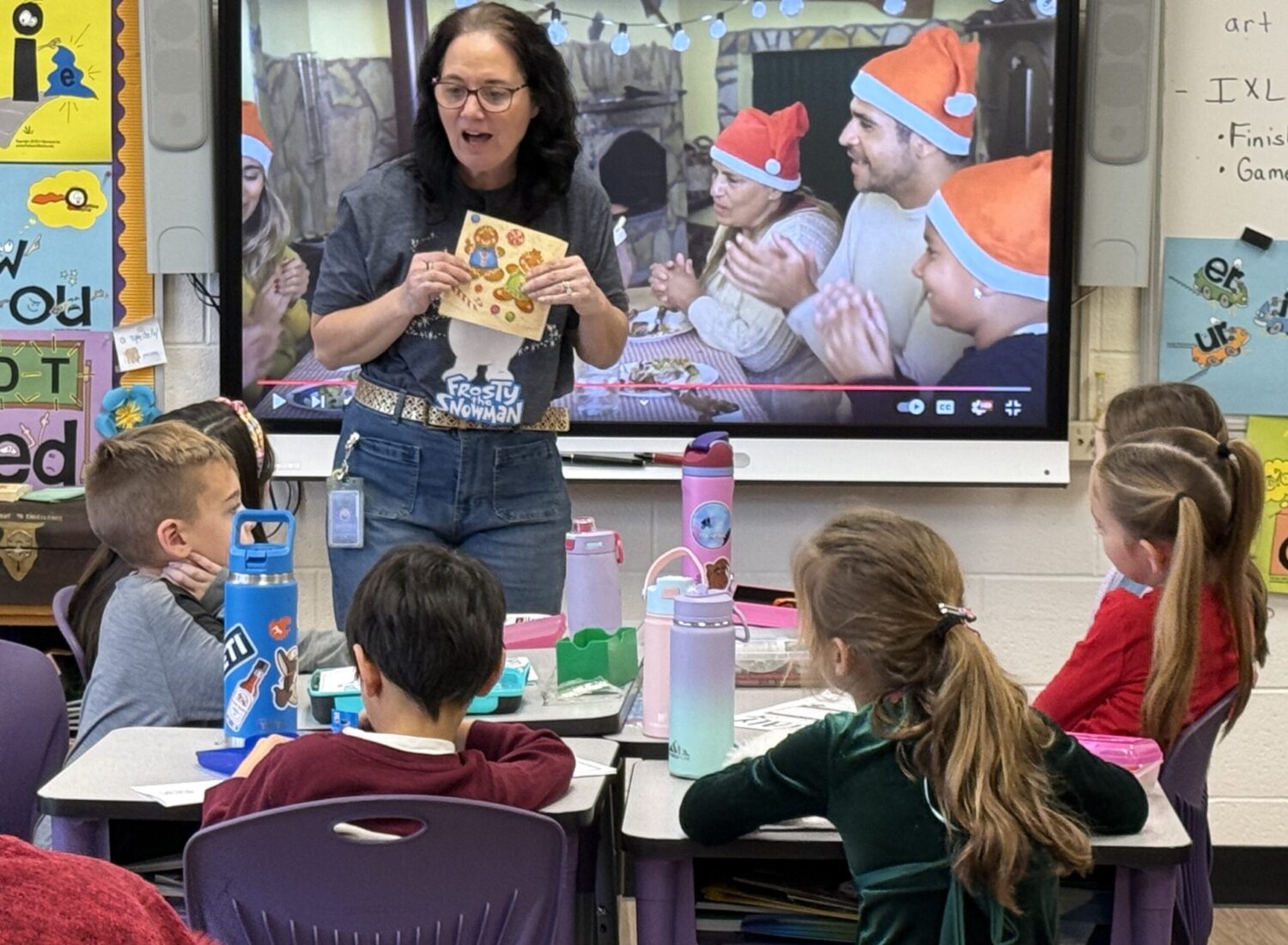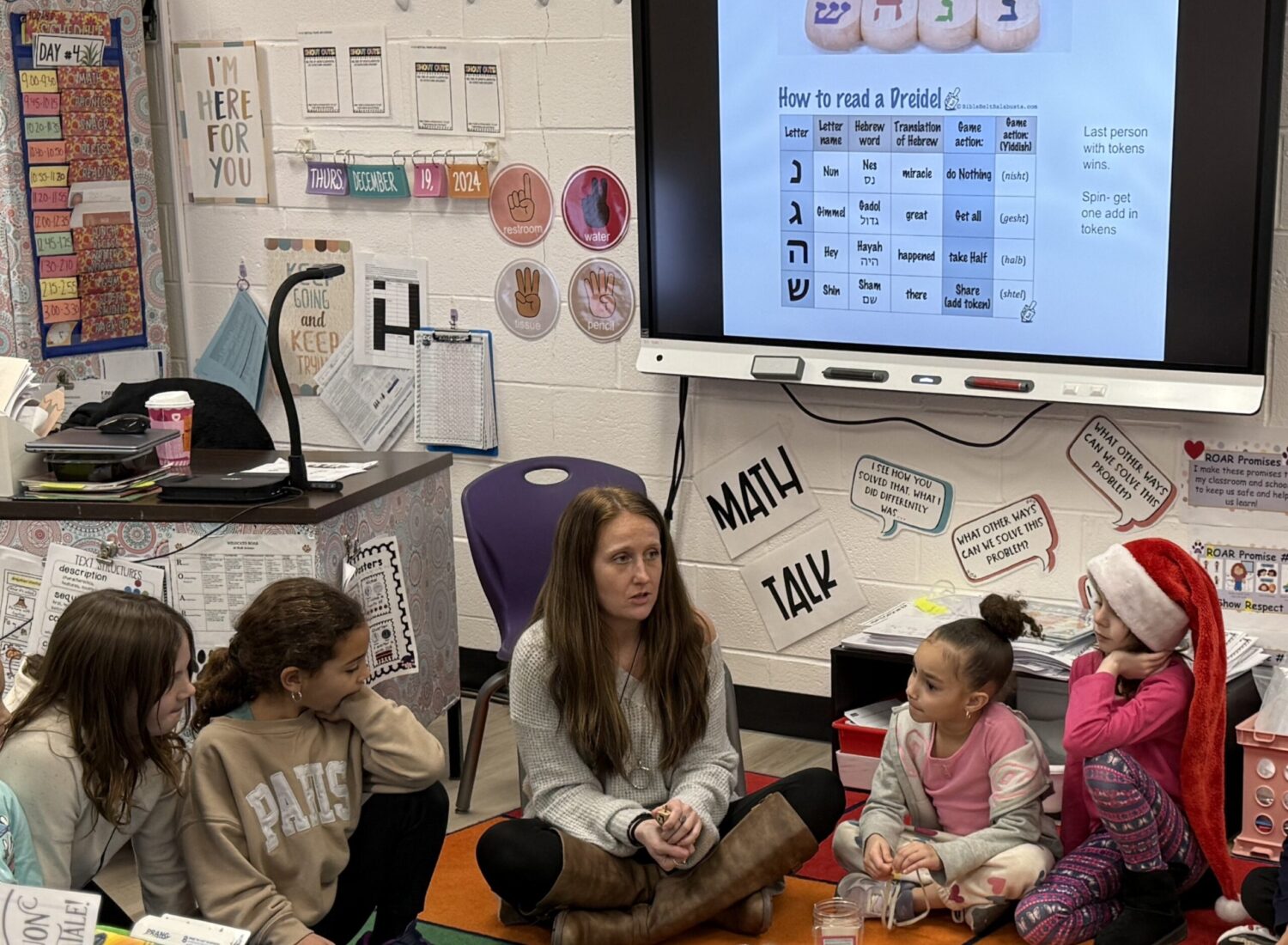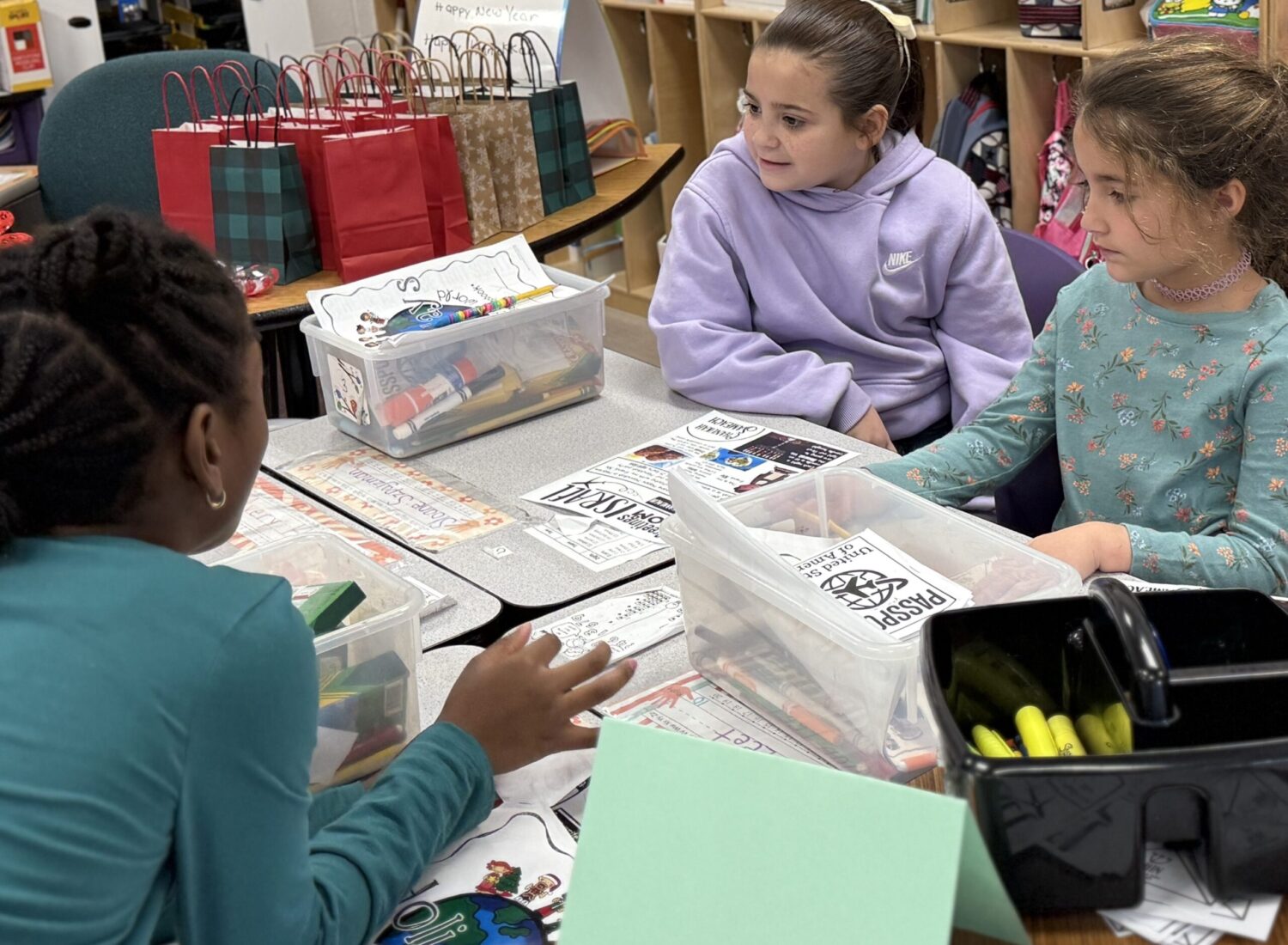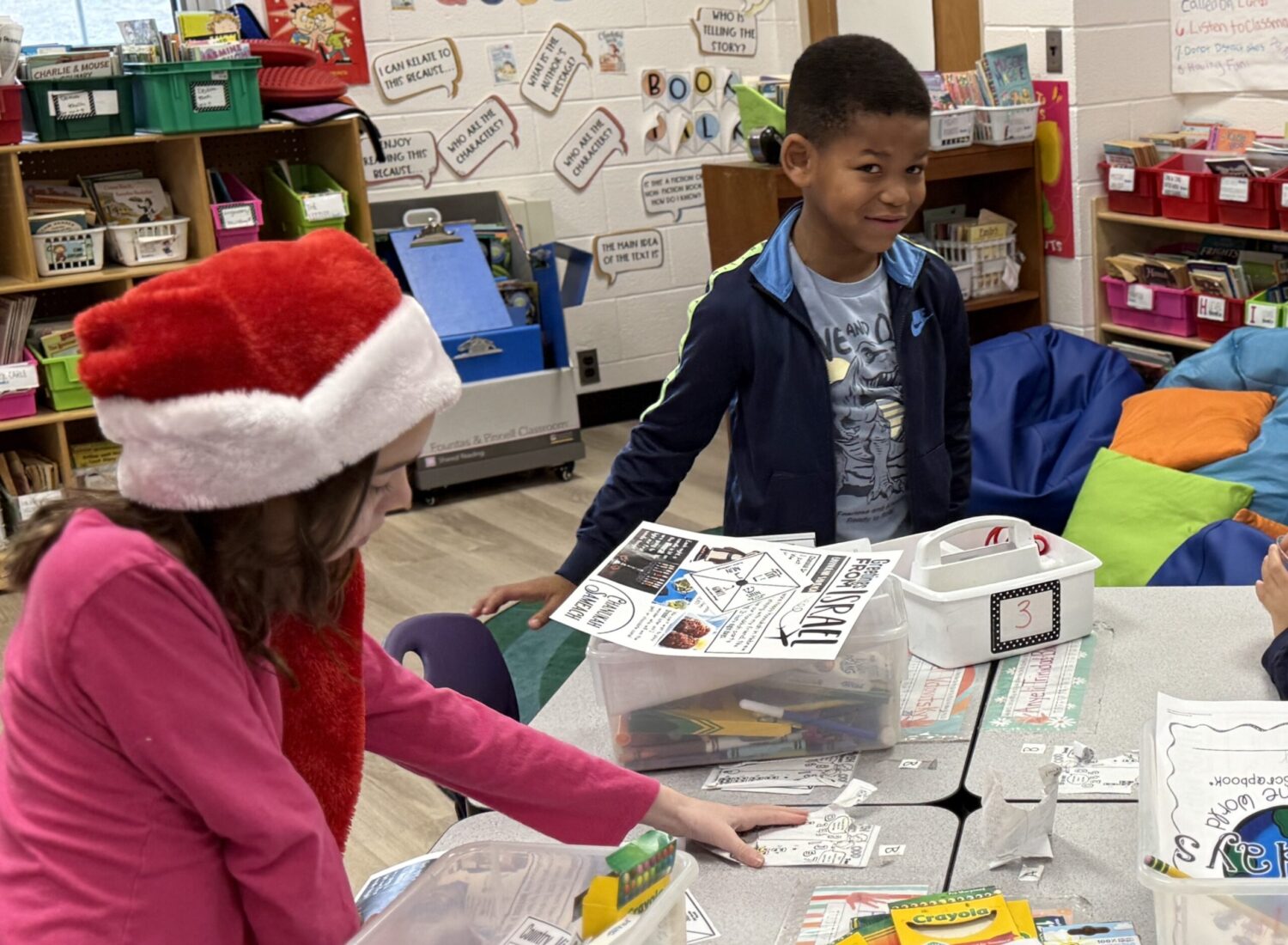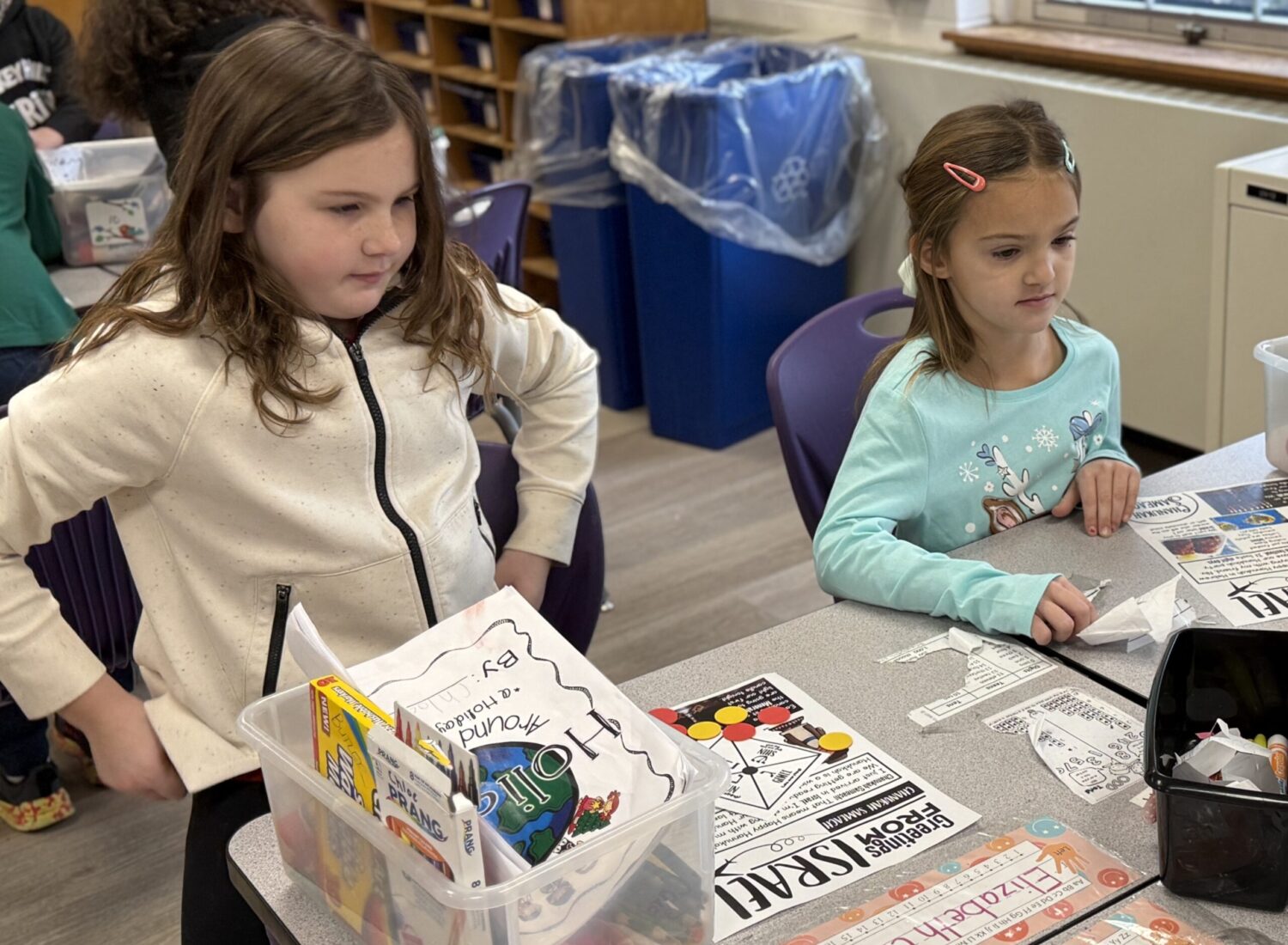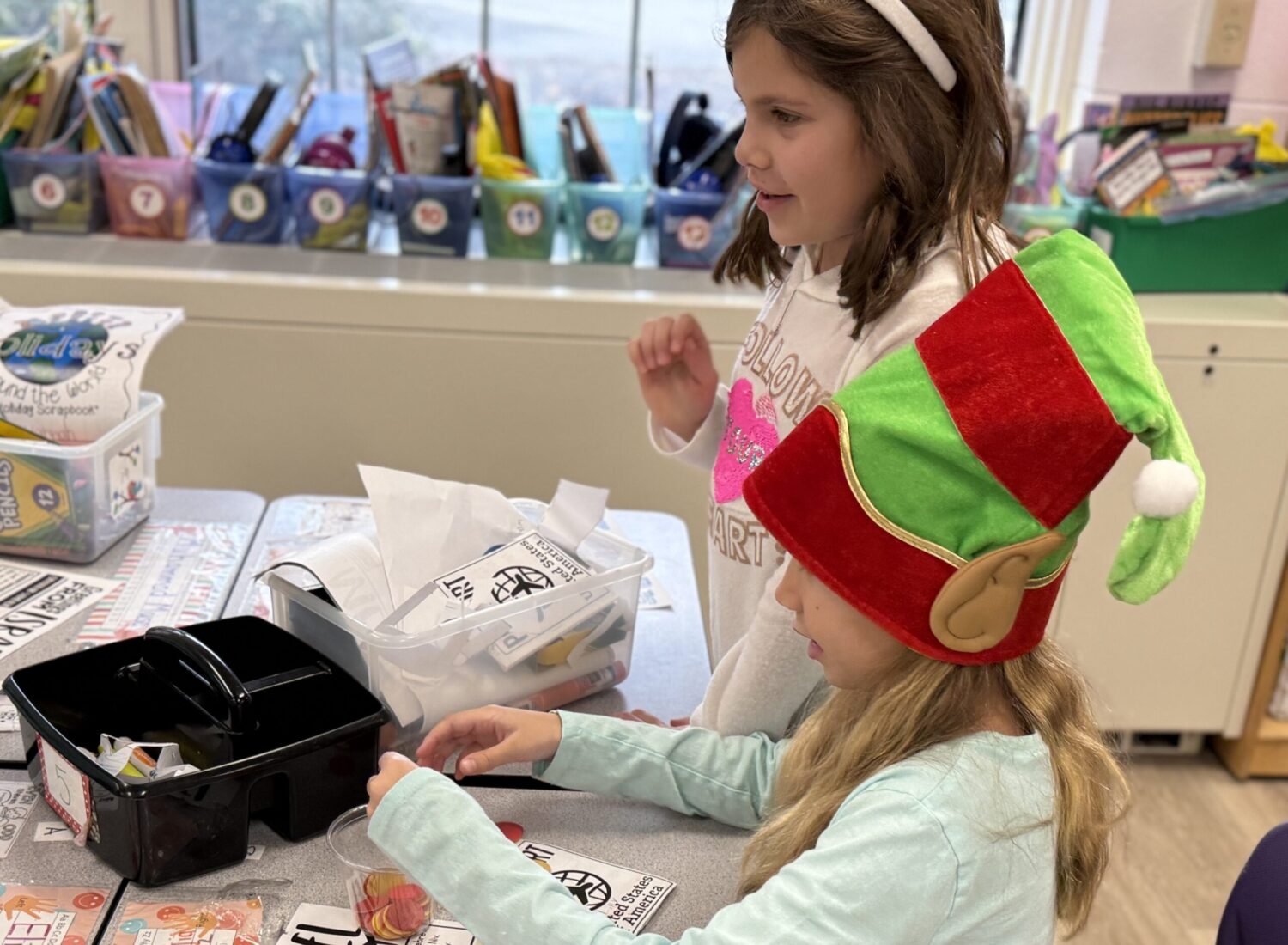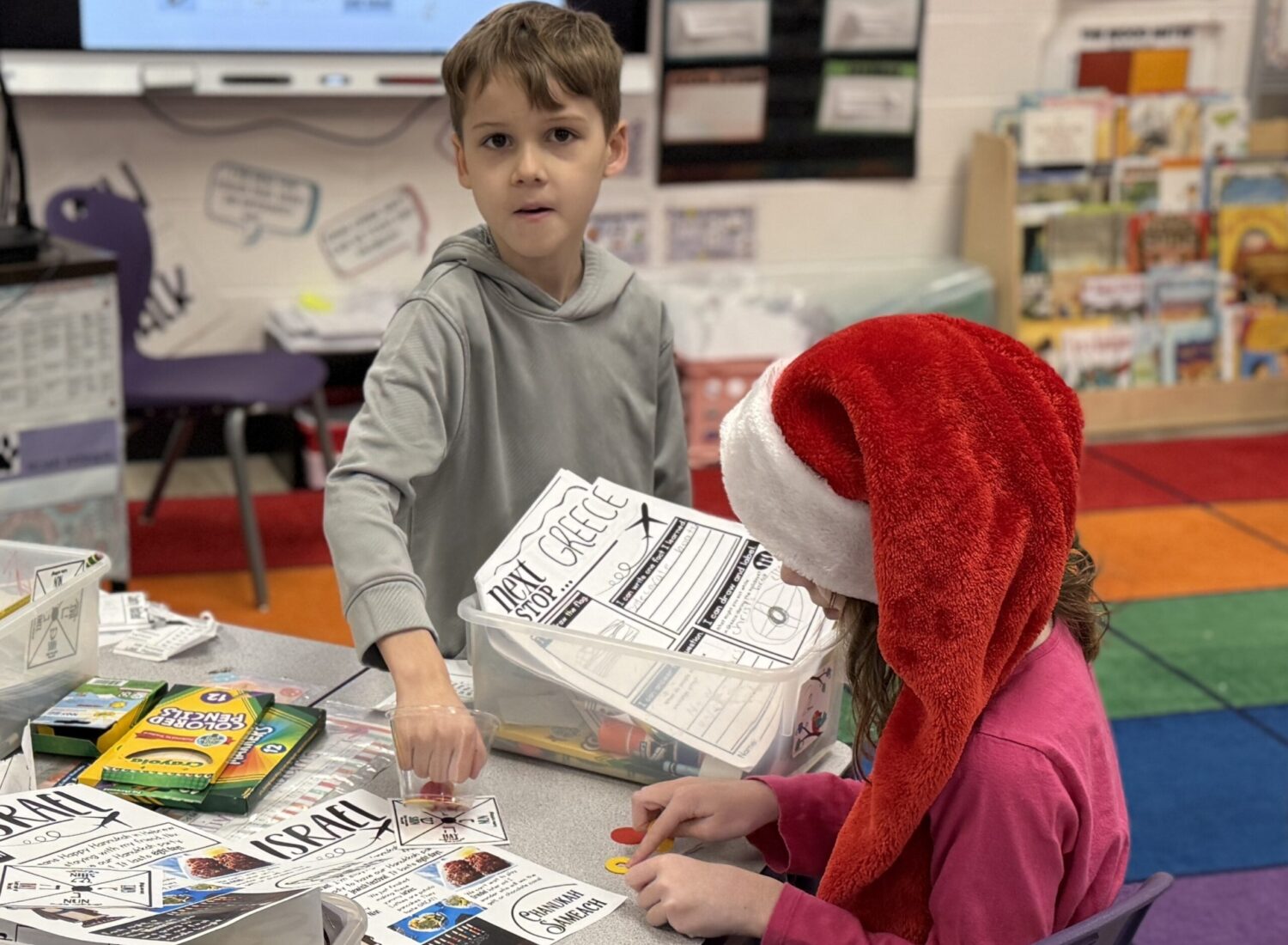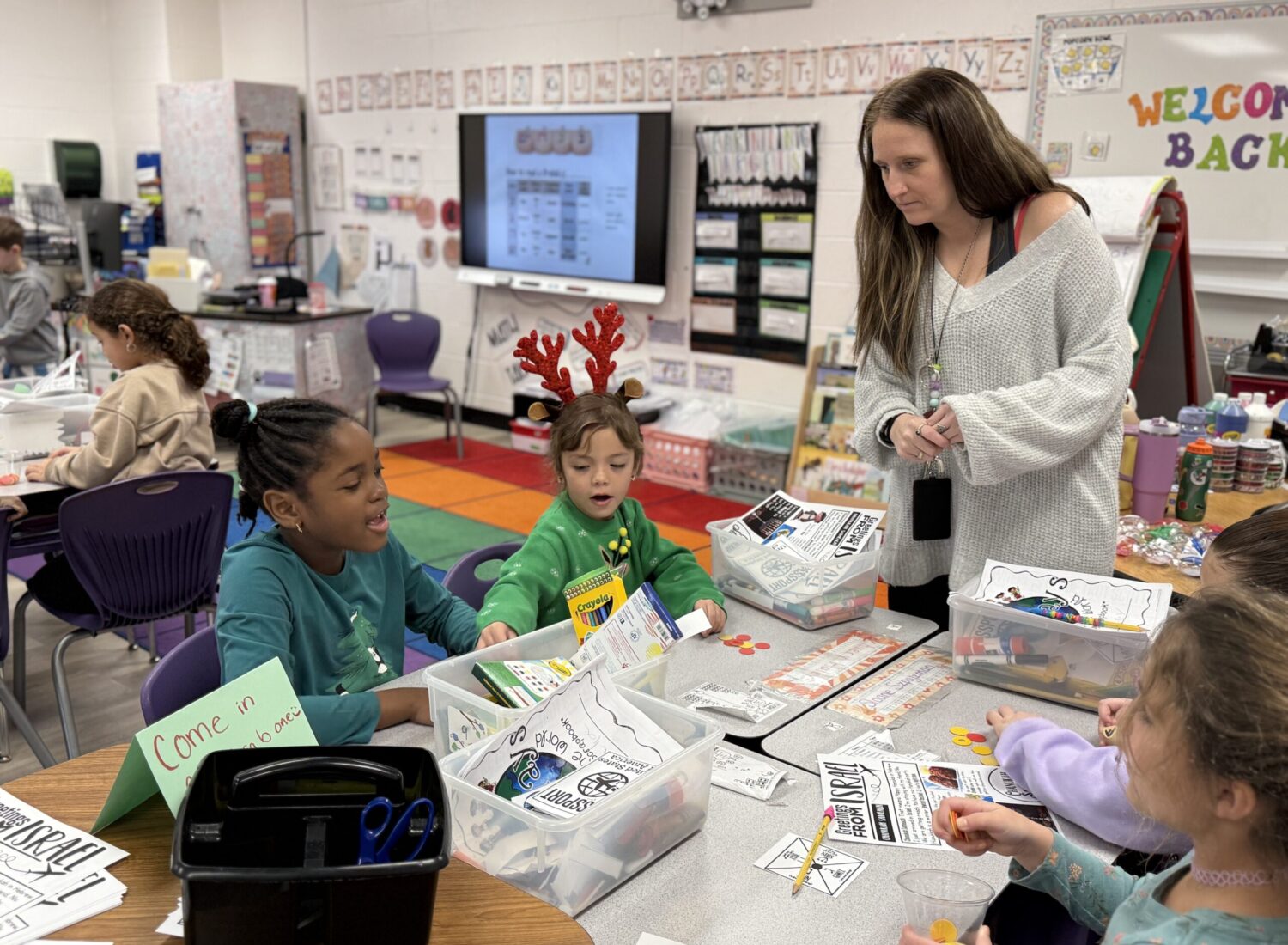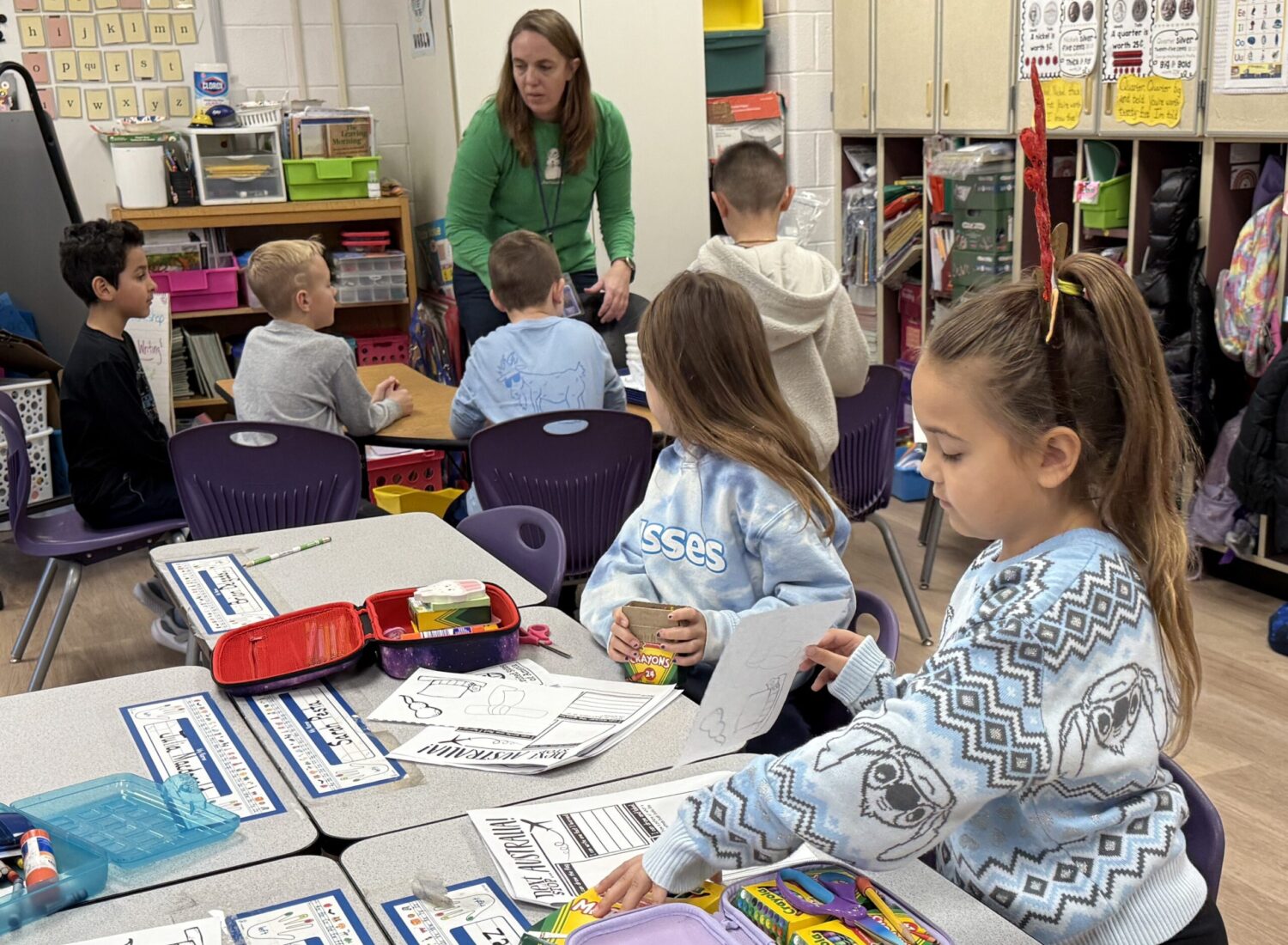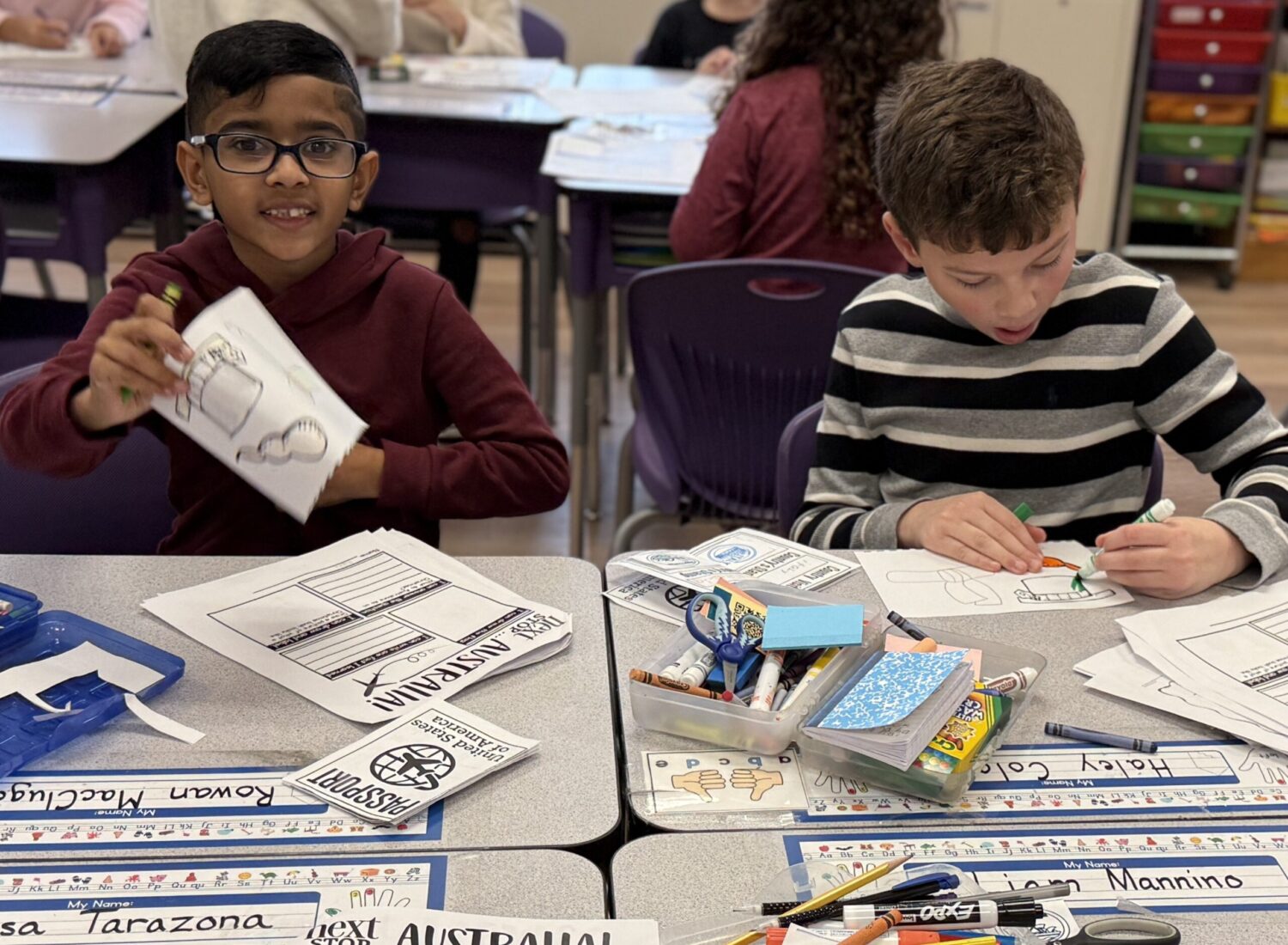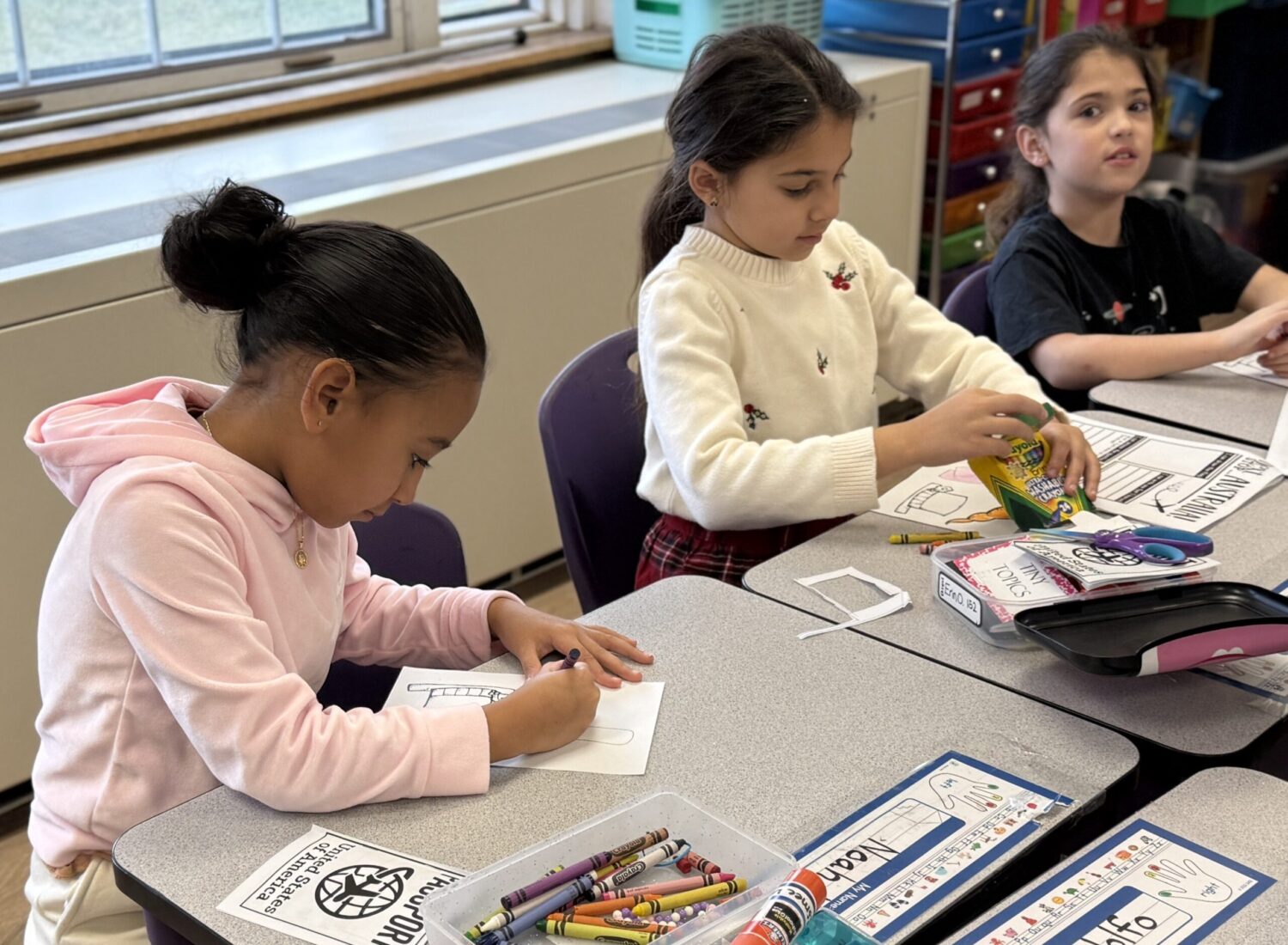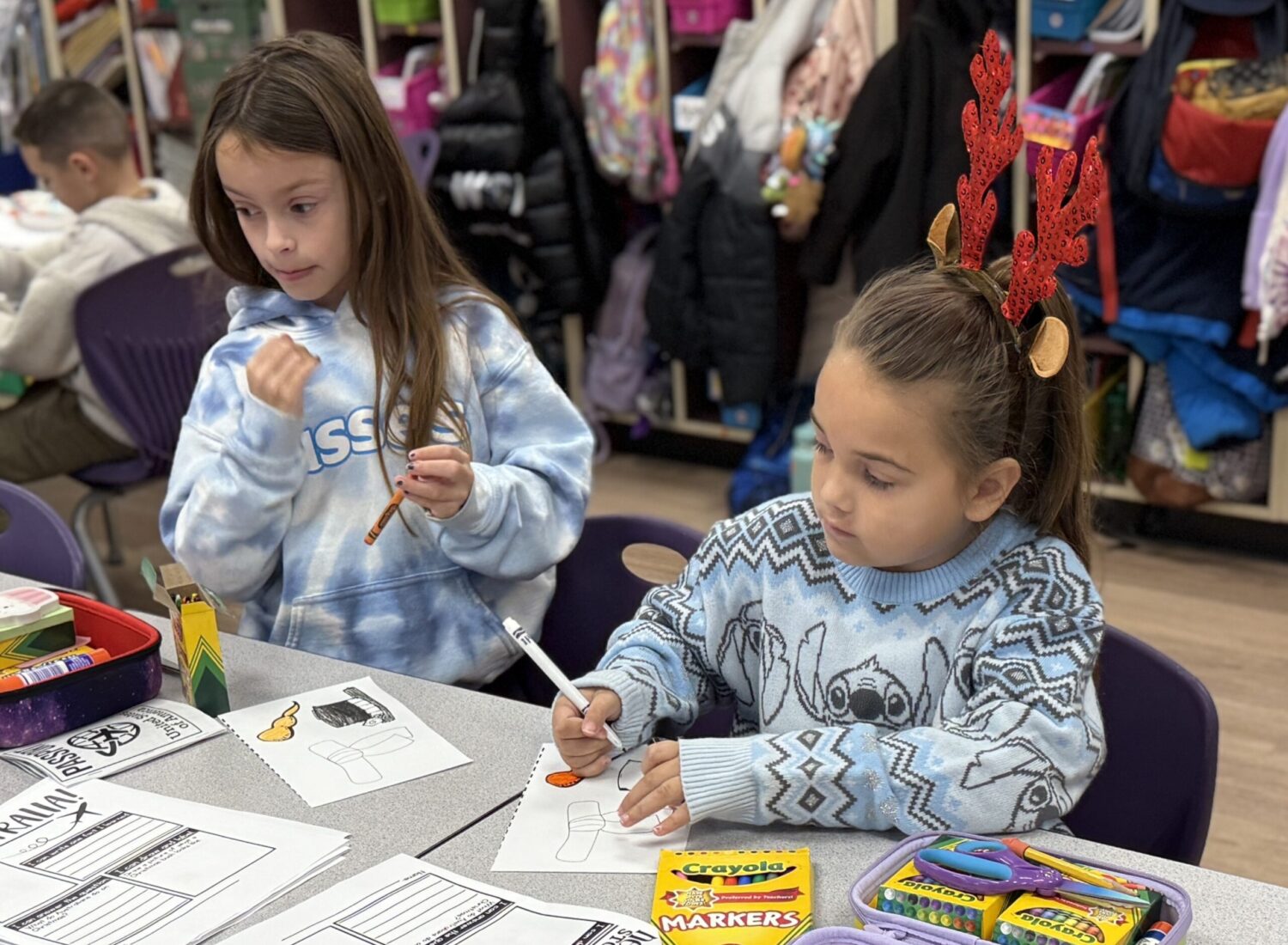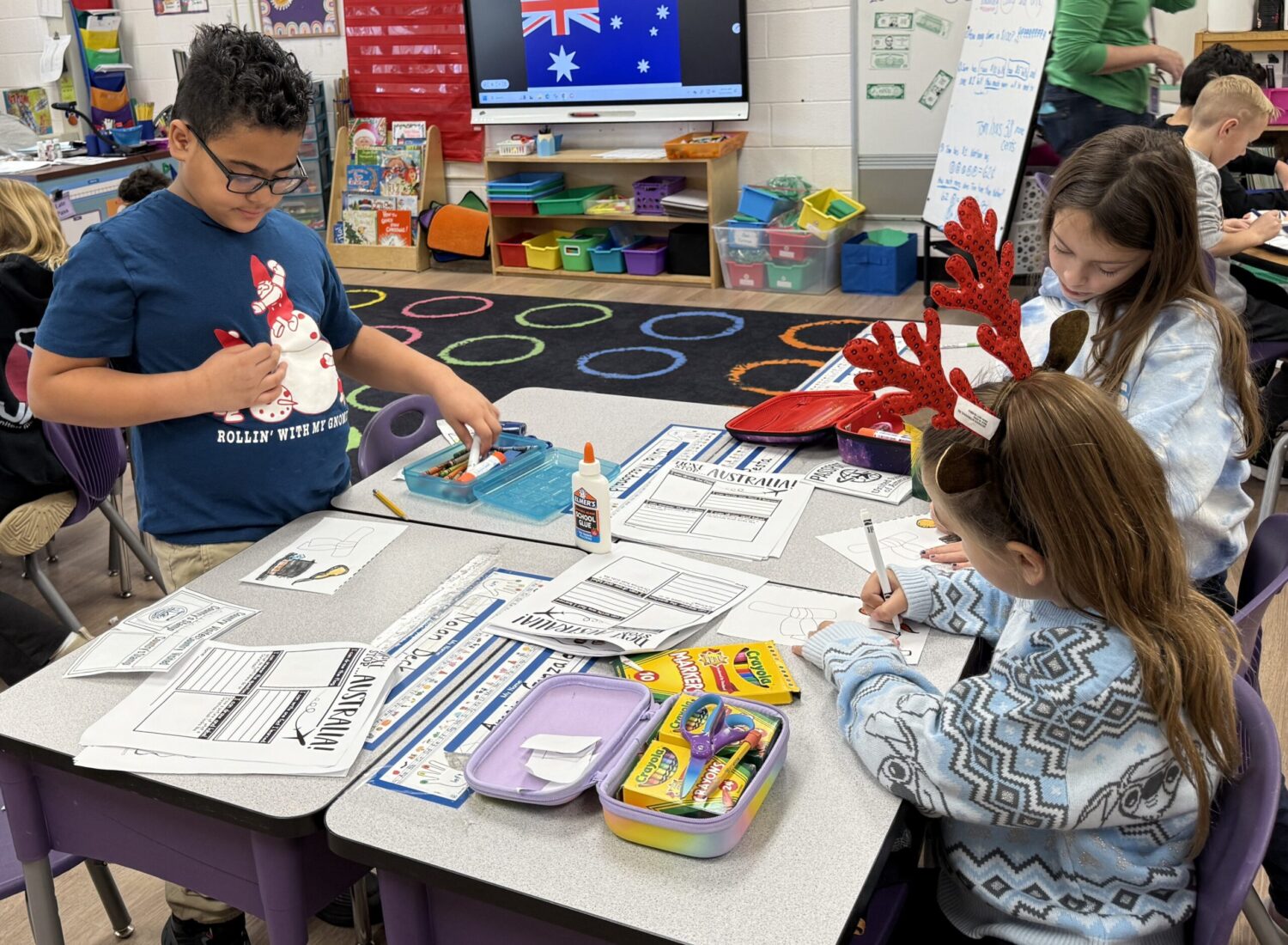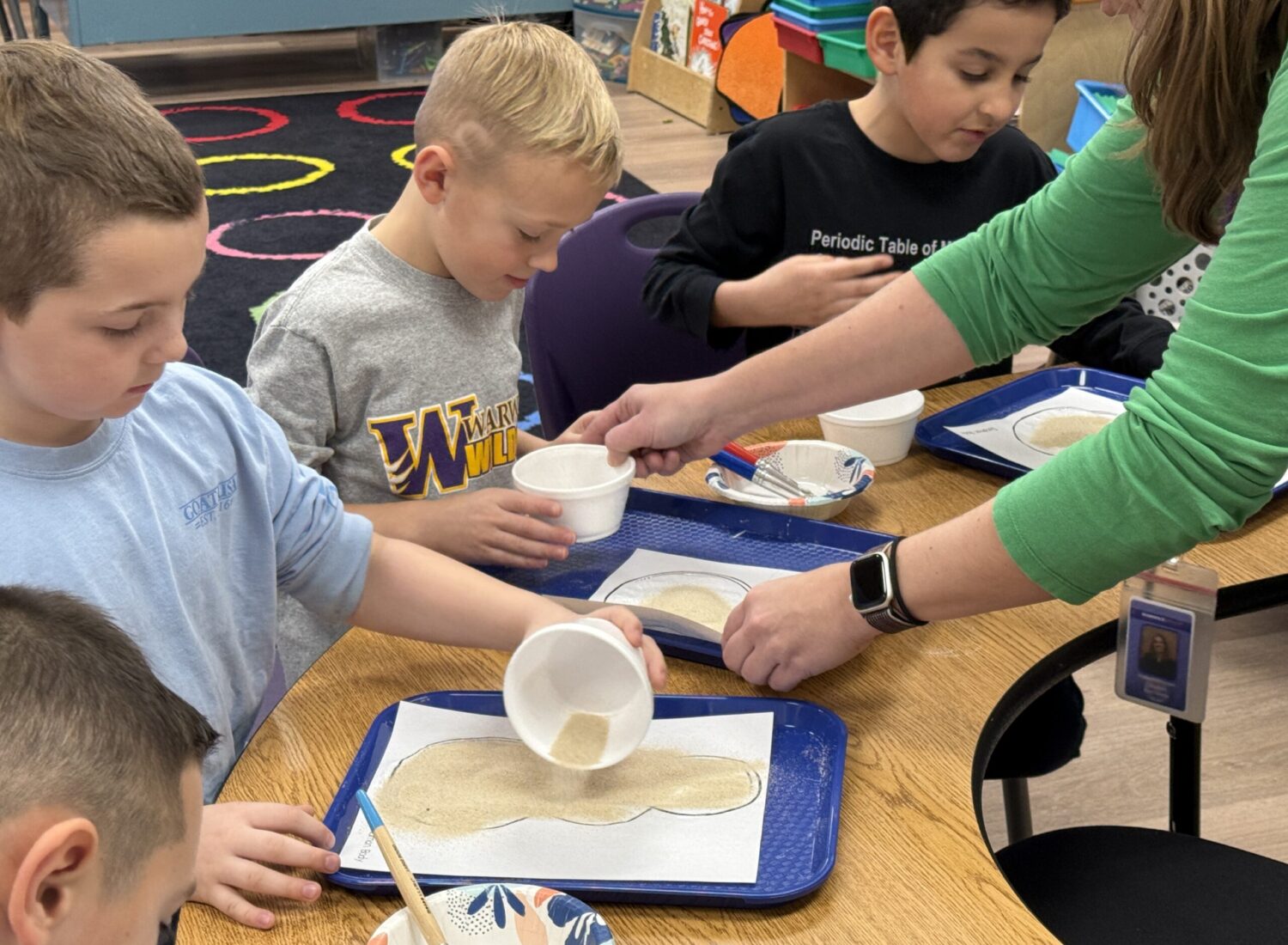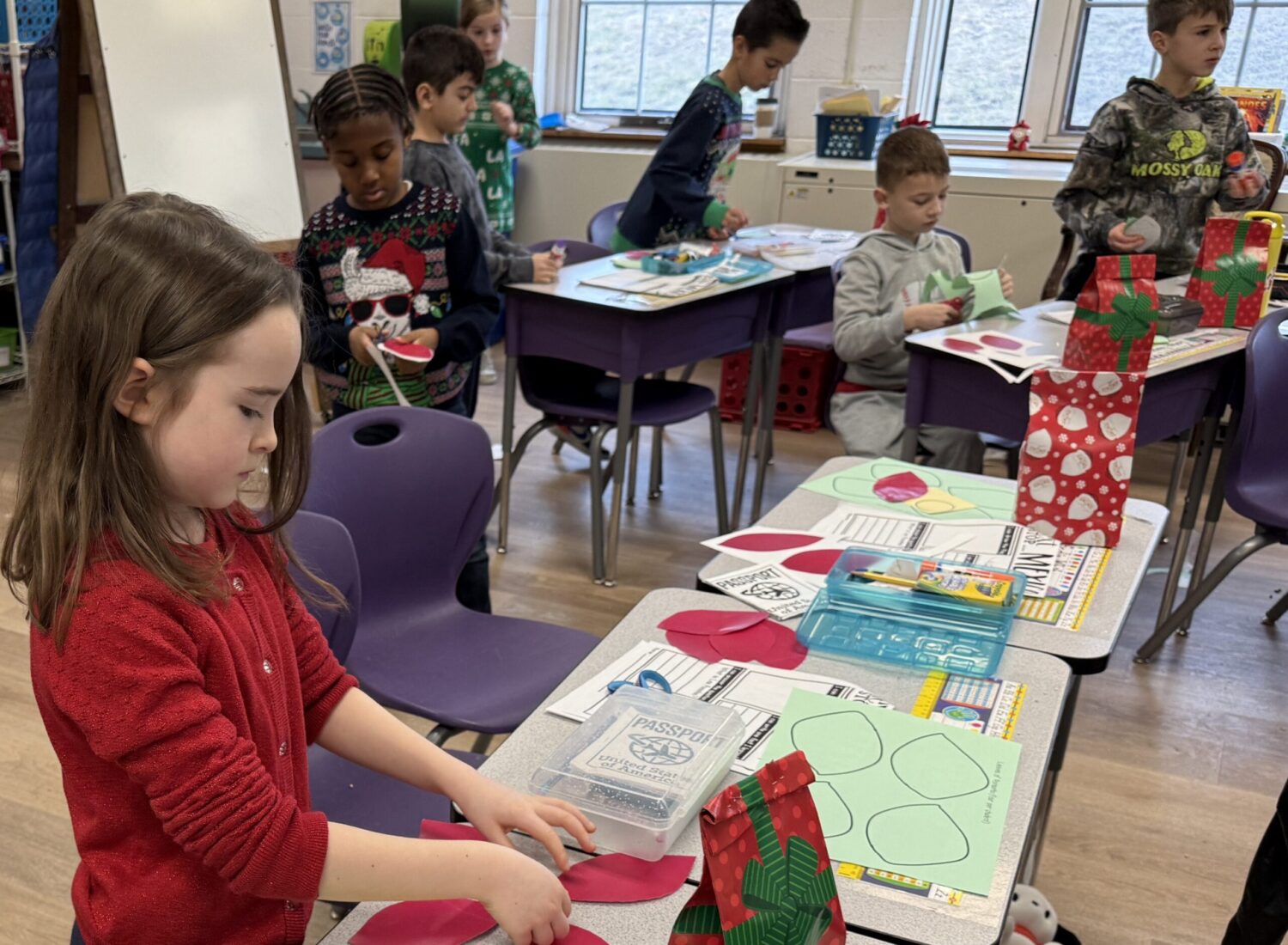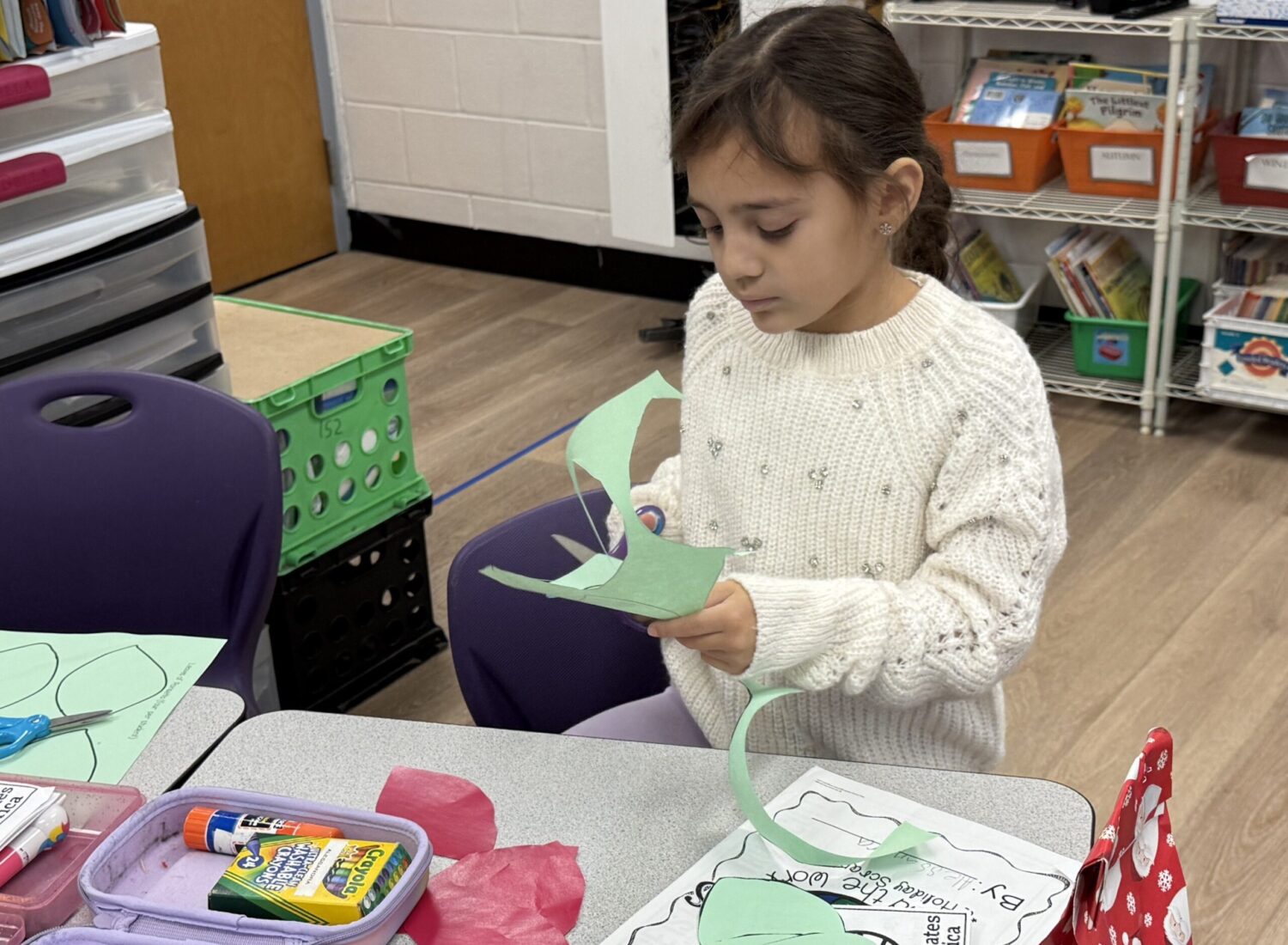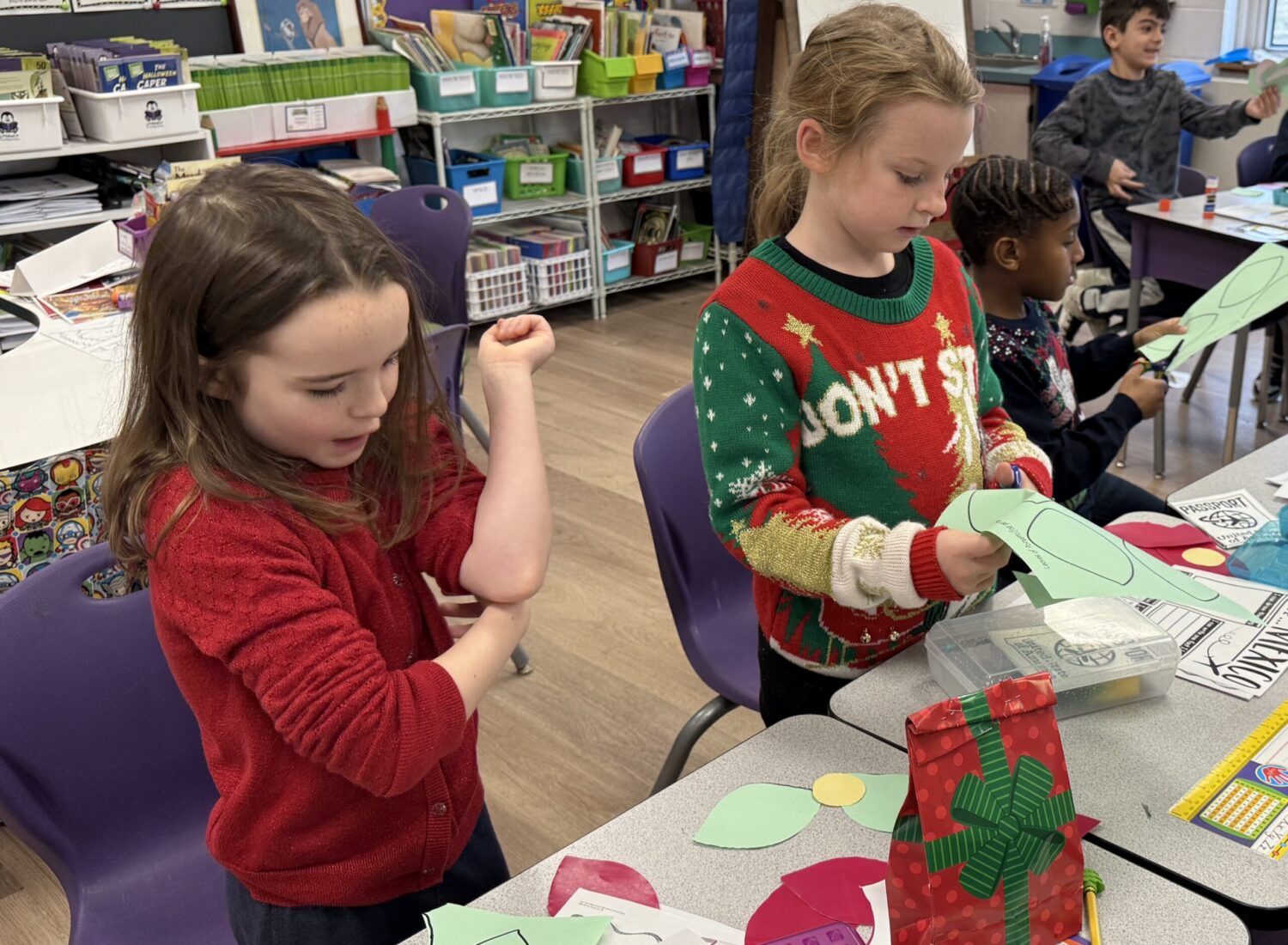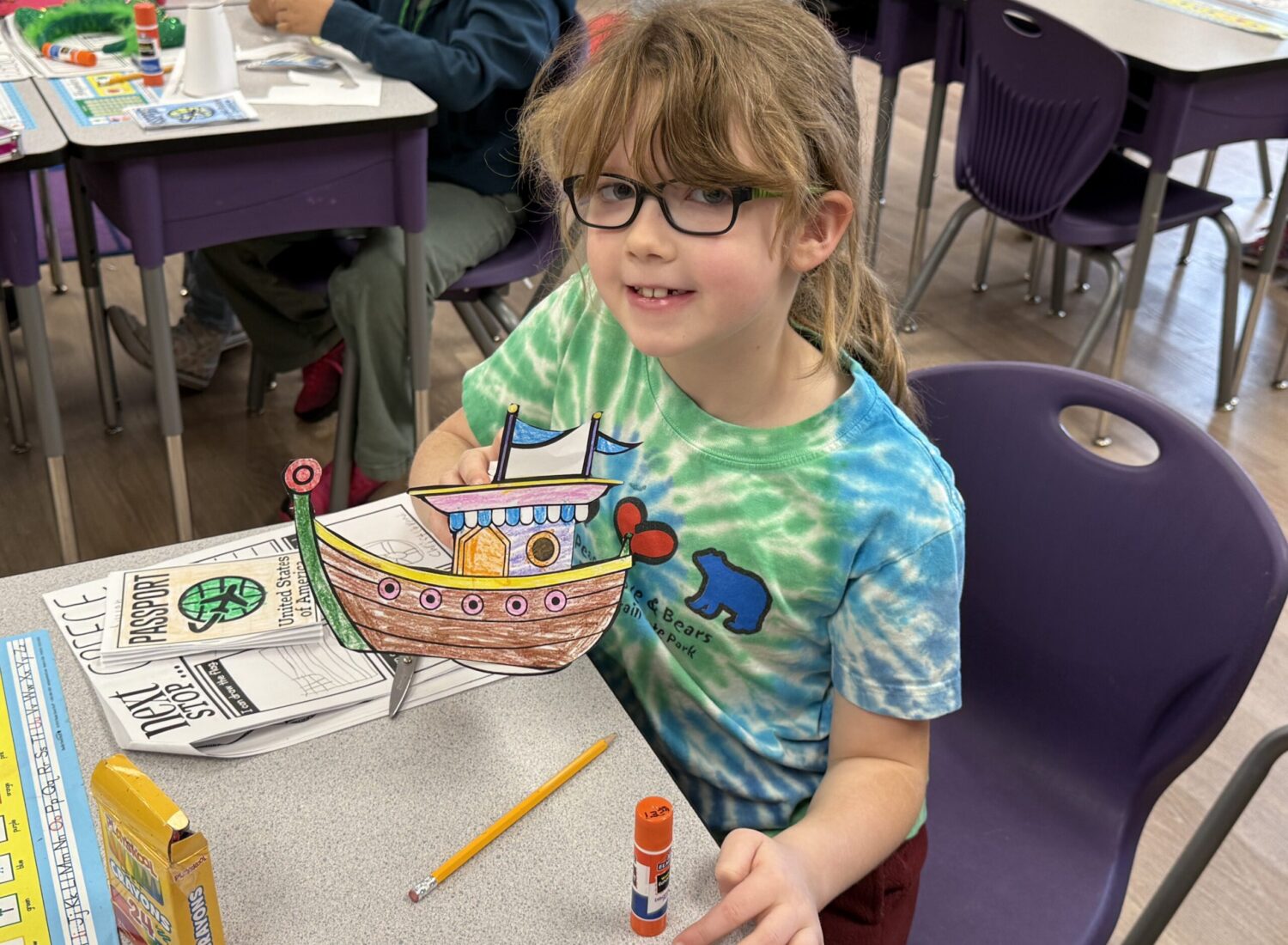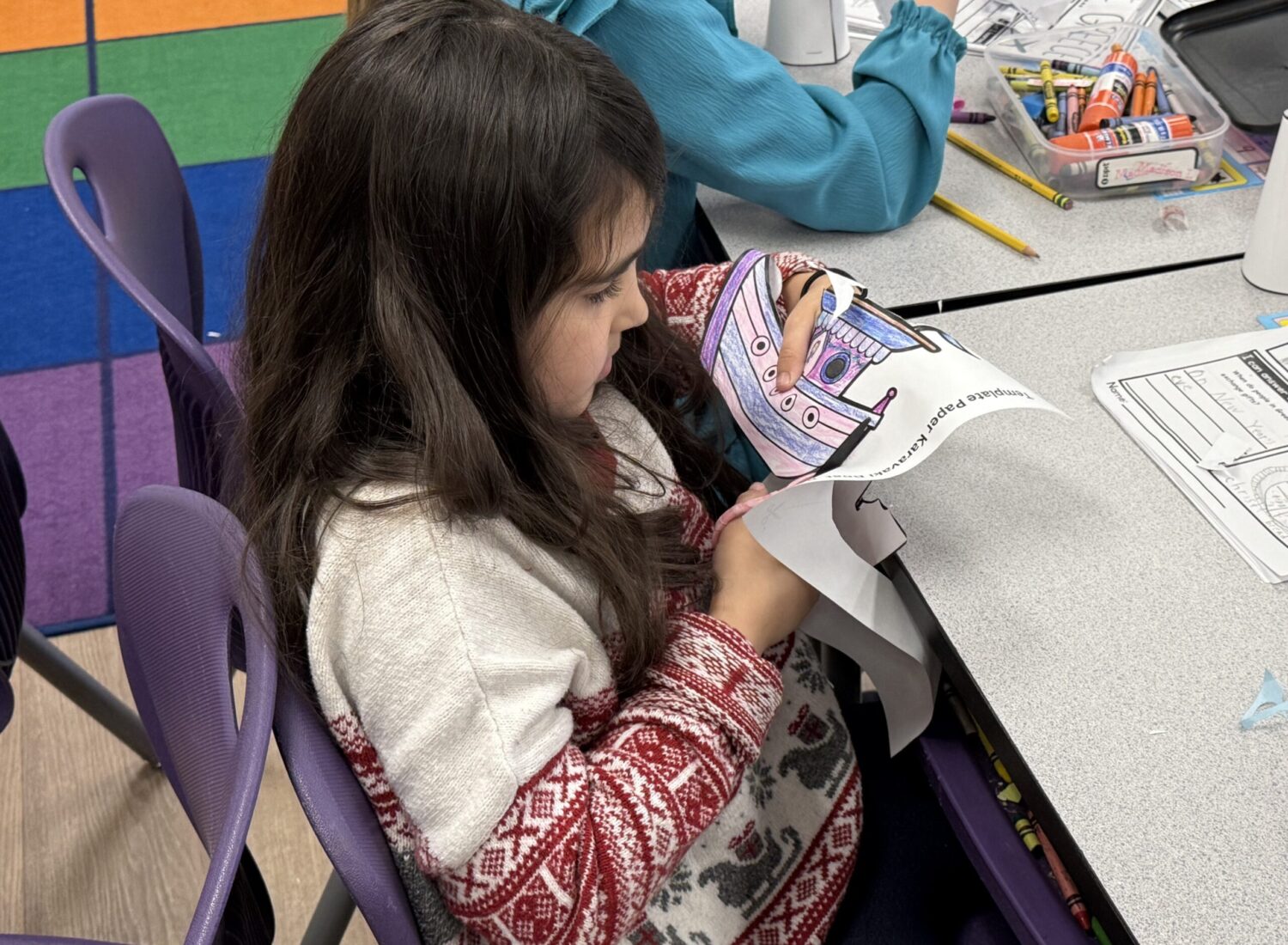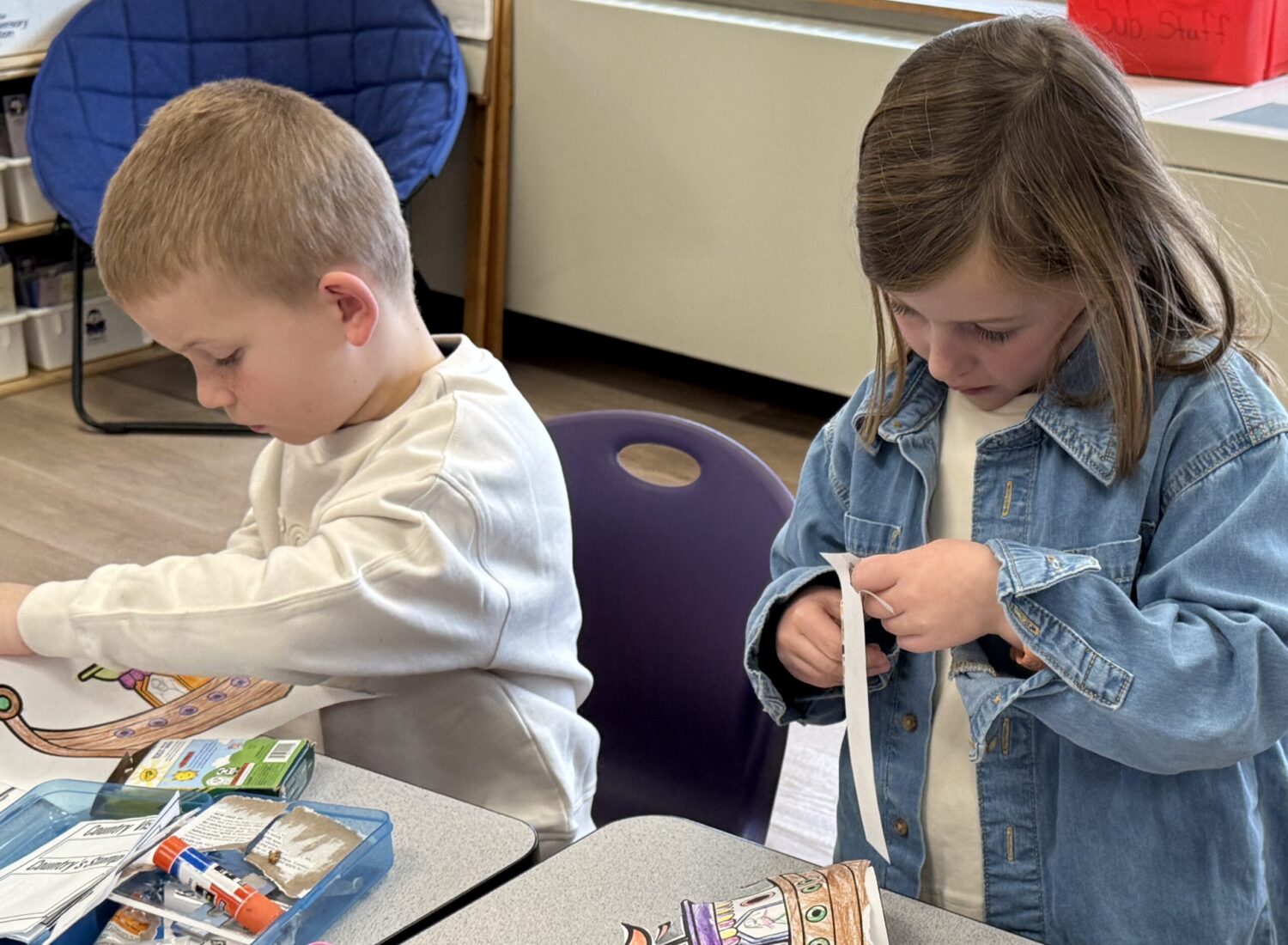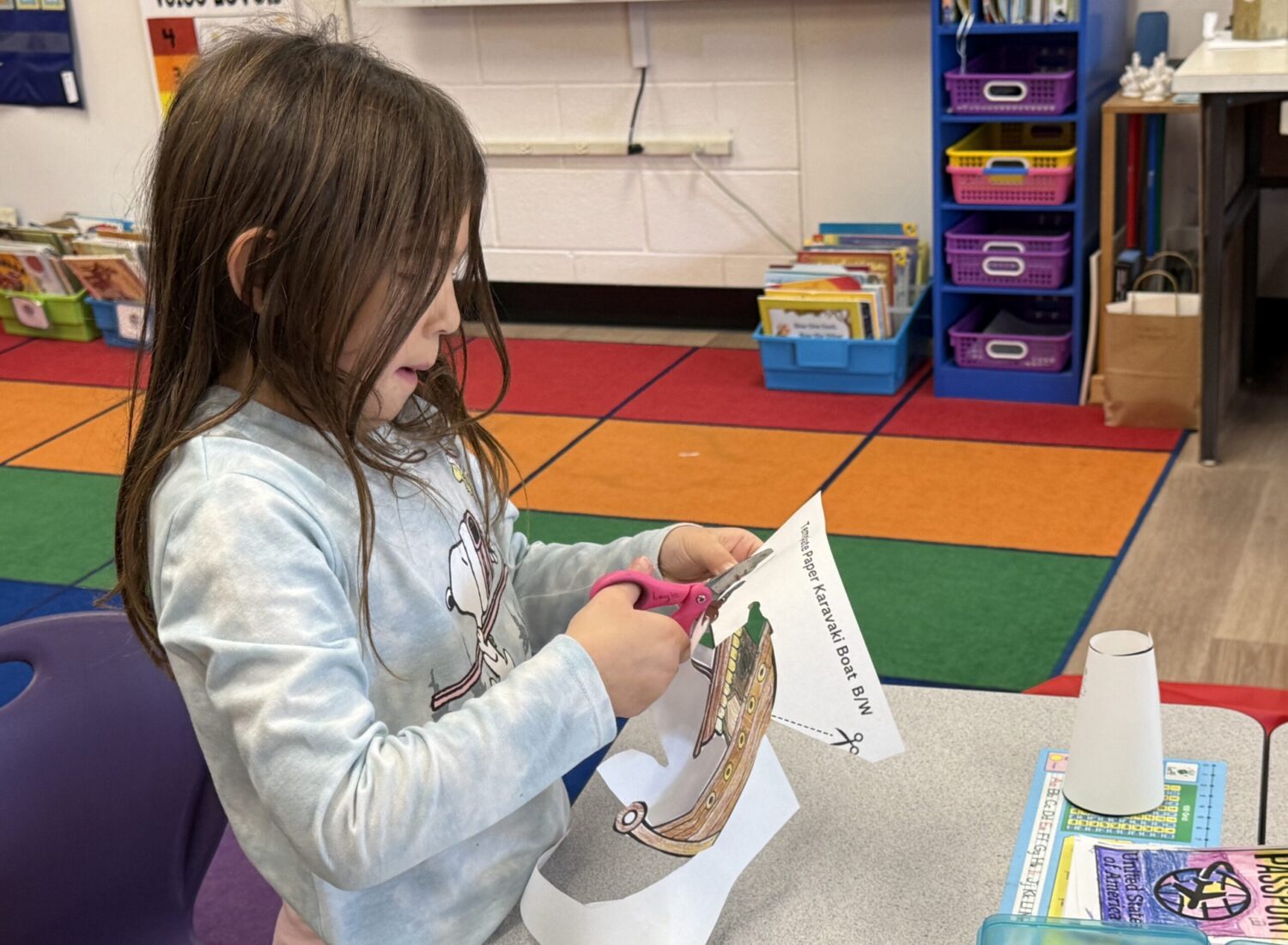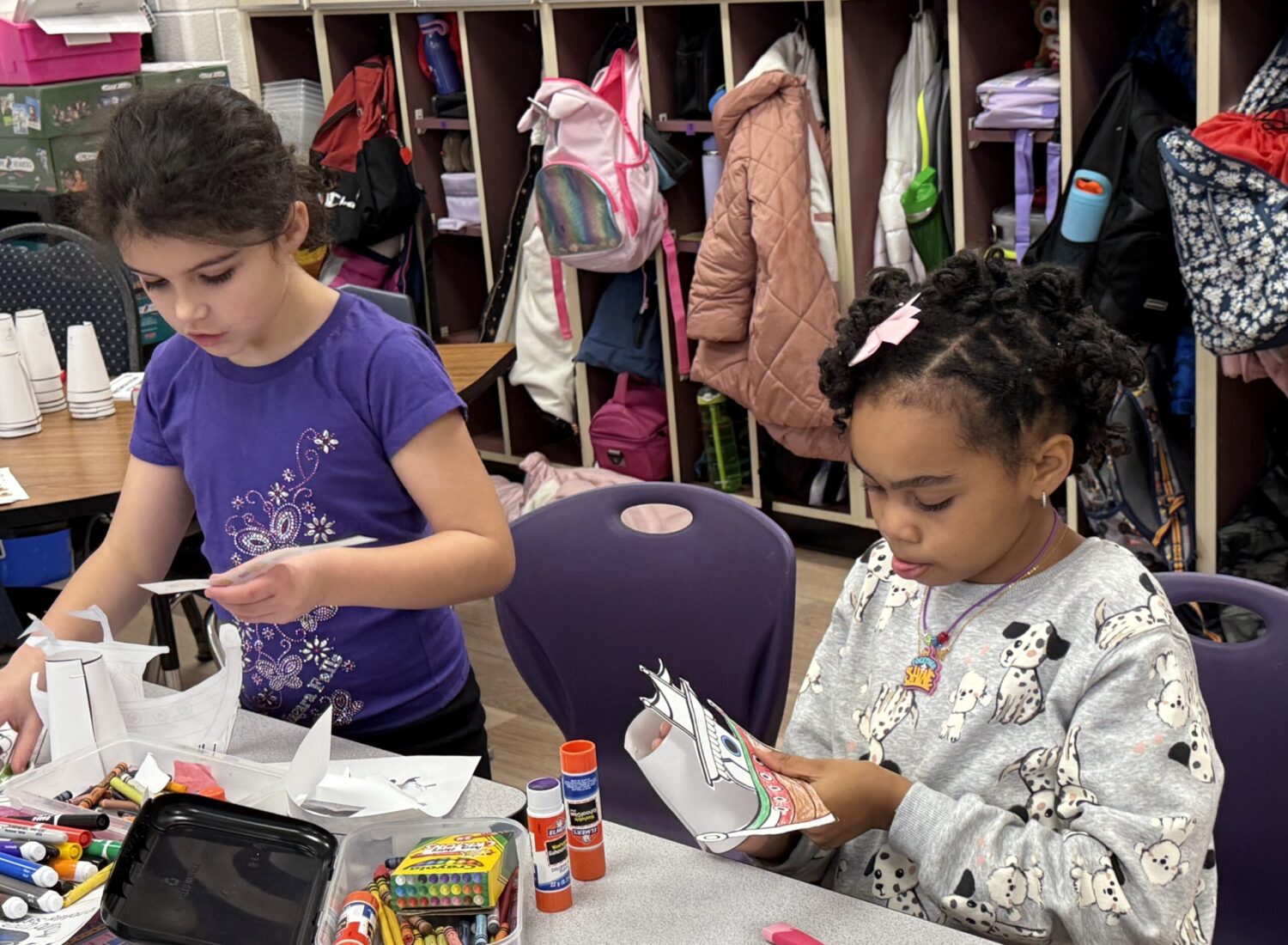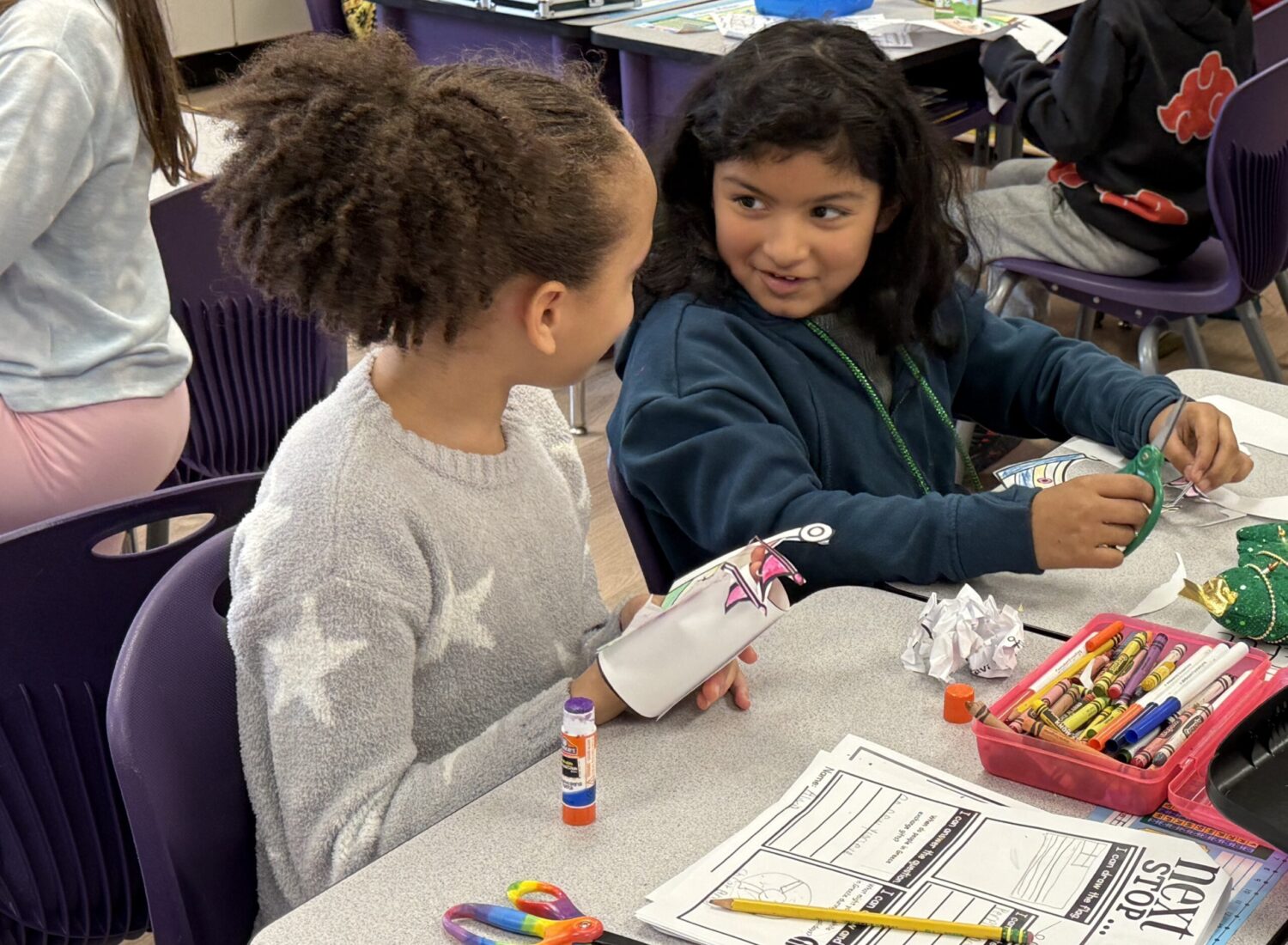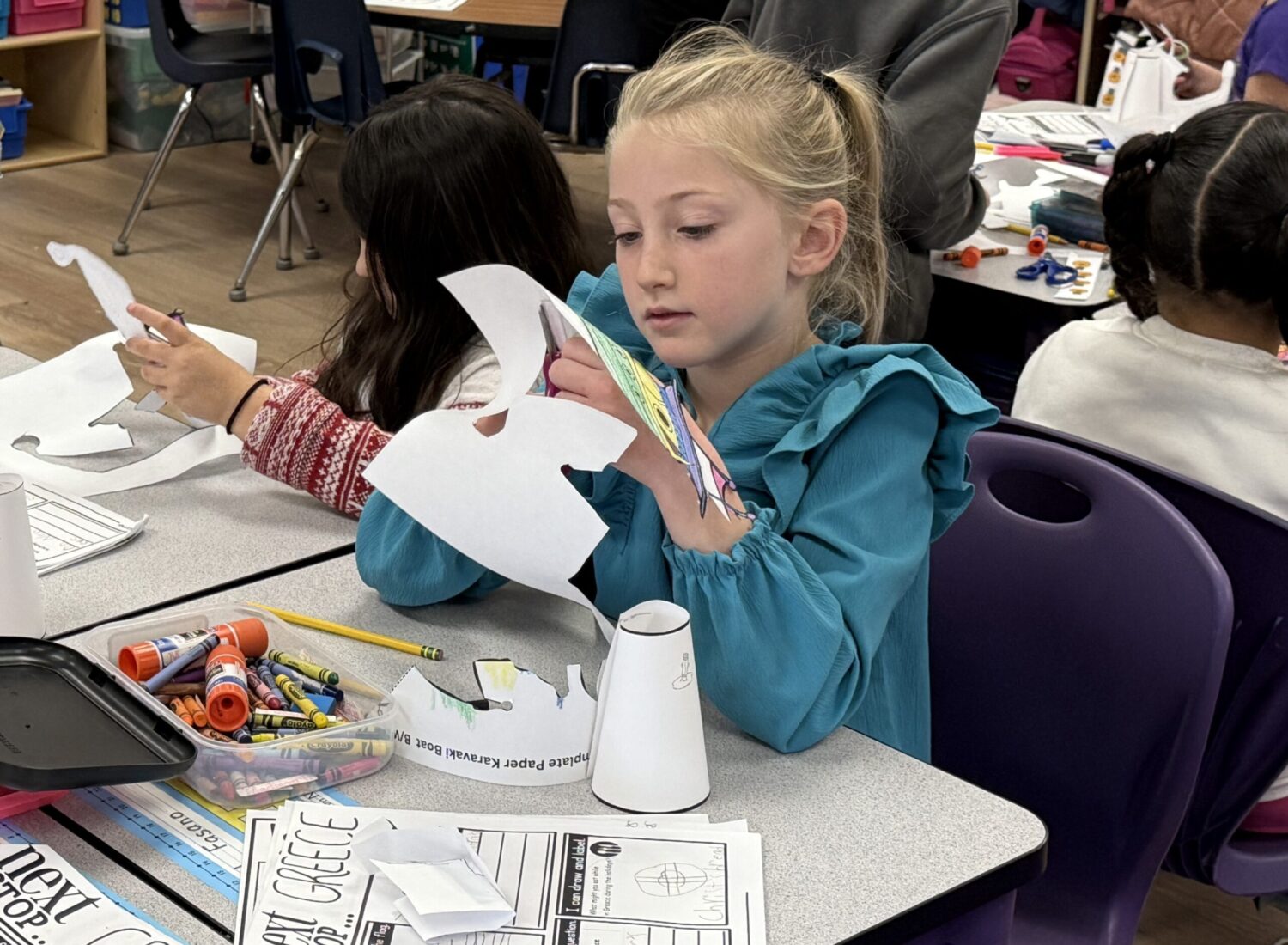Park Avenue students brave holiday travel to explore holiday traditions
The holiday season is the most popular travel time of the year, and second-grade students at Park Avenue Elementary School joined in on the fun by virtually flying off to Israel, Mexico, Italy, Greece and Australia to learn about the holiday traditions people practice in those countries.
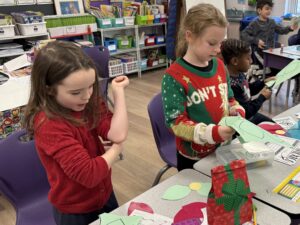 The students in Catherine Hobart’s class visited Italy, where they learned about La Befana. Italian folklore depicts La Befana as a benevolent witch who symbolizes goodwill and generosity. She visits children on January 5 each year, making deliveries to children on the eve of the Epiphany.
The students in Catherine Hobart’s class visited Italy, where they learned about La Befana. Italian folklore depicts La Befana as a benevolent witch who symbolizes goodwill and generosity. She visits children on January 5 each year, making deliveries to children on the eve of the Epiphany.
See a gallery of festive photos from “around the world” below this story!
“La Befana is a friendly witch,” Ms. Hobart explained to the students. “She gives sweet treats to kids if they’ve been good, and hole-shaped treats if they’ve been bad.”
After La Befana, the students learned what a “tovagliolo di Natale” is – a traditional holiday napkin! Their activity for the morning was to write a letter to someone in their family that would go inside one of these napkins. The traditional practice of holiday napkins adds a very personal touch to Italian holiday celebrations.
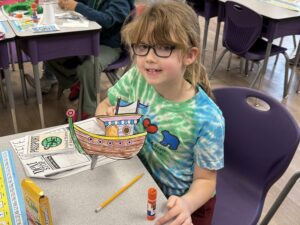 In Israel, students had fun exploring some of Judaism’s Hanukkah traditions and celebrations. In particular the students learned about the significance of the menorah and its eight candles — the miracle of the single-day oil supply that burned for eight days. Meanwhile, travelers in Greece were busy making their own Karavaki, which means “small boats.” Karavaki boats are typically adorned with lights and ornaments (just like Christmas trees) and placed all over Greek towns during the Christmas season. It is popularly held that this custom is rooted in Greece’s maritime culture.
In Israel, students had fun exploring some of Judaism’s Hanukkah traditions and celebrations. In particular the students learned about the significance of the menorah and its eight candles — the miracle of the single-day oil supply that burned for eight days. Meanwhile, travelers in Greece were busy making their own Karavaki, which means “small boats.” Karavaki boats are typically adorned with lights and ornaments (just like Christmas trees) and placed all over Greek towns during the Christmas season. It is popularly held that this custom is rooted in Greece’s maritime culture.
Did you know that during the holidays in Australia, people make SANDmen instead of SNOWmen? When it’s winter here, the students learned, it’s summer there. Students celebrated like the Aussies by using glue and sand to make their own seasonal sandmen. The activity also made us wonder: Do Australians make snowcastles instead of sandcastles?
See a gallery of festive photos from “around the world” below this story!
In Mexico, students used art supplies to make their own poinsettias. Arguably the most popular holiday plant out there, students learned that poinsettias are indigenous to Mexico. Their popularity dates all the way back to the Aztecs and continues right up through today! The students also learned about Las Posadas, a festival celebrated between December 16 and 24. Las Posadas means “The Inns,” and the festival commemorates Joseph and Mary’s journey to Bethlehem in search of safe refuge, highlighting themes of hospitality and community.
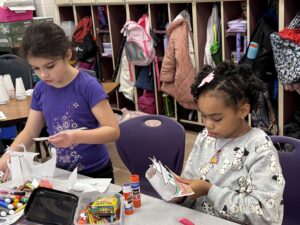 “I really liked learning about the celebrations that Mexico has for Christmas,” said second-grader Mary Kate Hobak. “I didn’t know that Mexico had such pretty flowers!”
“I really liked learning about the celebrations that Mexico has for Christmas,” said second-grader Mary Kate Hobak. “I didn’t know that Mexico had such pretty flowers!”
Exploring global cultures helps elementary students broaden their horizons and fosters a sense of empathy and understanding. It is a subject that can help them develop respect for differences while recognizing the common values that unite us all, which aligns with the Portrait of a Graduate trait of being an Global & Ethical Citizen. The students particularly enjoyed comparing the traditions they learned about on their virtual travels to the ones they know and love today. They also had a nice time sharing some of their own favorite traditions with one another and, of course, their shared excitement for next week!


